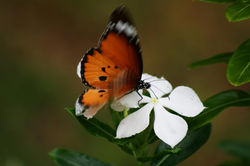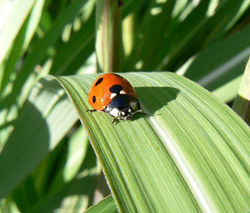GUIDE TO:
Content
Writing the panel can seem daunting. But work your way through our guide and it will all fall into place.
Text
Title: Either keep it simple and factual, perhaps just the name of the site and theme of the panel or try something intriguing such as a question to draw attention.
Introductory paragraph: most readers won't get beyond this paragraph. So try to keep it short with a few punchy facts. Keep the tone friendly and welcoming.
Body text: Write it out in full and then to reduce the words by half! Keep your sentences short. Avoid repetition and strip out anything that isn't essential to your key points. Avoid using phrases such as 'last year' or 'recently'. If your board is in place for five years or more, these won't make any sense.
Can some of your information be presented as bullet points to help break up text? Are there sections which can be separated into a standalone box or pull-quote?
Do you need to include a call to action? Do you want the reader to go to a website for more information, join a group or tell others? Tell them what you want them to do (in a friendly way!).
Once you think you have completed your text get someone who doesn't know anything about the site to read it through. Does it make sense to them? Were they overwhelmed with information? Ask them to be honest and listen to their feedback!
If you have lots of content can some be put online and a QR code added for readers who want more information?
Contact details: only include information that is unlikely to change in the near future. We can supply QR codes.
Logos and acknowledgements: who are the partners in your project? They will need to supply a high-resolution jpg or eps file of their logo. Ask for these early on to prevent delays.
Proofreading: it is essential that you get one or two people with good grammar skills to check the final panel for you.
Photos
Due to the print process (and copyright) you can't just copy photos from the internet. Photos must be high quality (at least 300 dpi) and eye-catching.
Photos taken on a good quality camera phone can be fine, try to keep the subject at the centre of the shot. If taking pictures of people get their permission and also set up the shot so everyone is facing the right way!
Stock libraries have excellent quality images but you usually need to pay and may have to allow a budget for photos. We particularly like Alamy. Free photo libraries like Unsplash can be useful.
Talk to us if you need advice, we have a good stock of nature photos that can be used or can help with sourcing photos for you.
Keep careful note of any credit that must appear alongside photos or illustrations.
Illustrations
We work with artists who can provide illustrations for you whether it is a cartoon style or a watercolour painting. The costs vary so please contact us and we will help you find something within your budget.
Maps
If you need a map on your board think about whether you want an Ordnance Survey style map with lots of information. If so, you will need to consider copyright and licensing issues.
If you send us a screenshot from Google Maps of the area, we can provide a quote for your a bespoke map that you can also use for other projects.
Talk to us early on about the mapping you may need as this element can often take a few drafts to get it just right for you.
Text, maps, photos, logos, contact details - don't be overwhelmed just get in touch with us for help!
 |
|---|
 |
 |
 |
 |
 |
 |
 |
 |
 |
 |
 |
 |
 |

